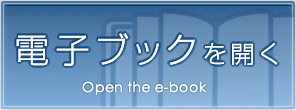For the Safety Navigation In Japanese Coastal Waters page 30/120
このページは For the Safety Navigation In Japanese Coastal Waters の電子ブックに掲載されている30ページの概要です。
秒後に電子ブックの対象ページへ移動します。
「電子ブックを開く」をクリックすると今すぐ対象ページへ移動します。
概要:
- 26 -Controlled vessels: of 40,000 GT or more (oil tankers: 5,000 GT or more)Vessels subject to control: Vessels of 500-40,000 GT (oil tankers less than 5,000 GT)Explanation of termsTable 2-3 Types a....
- 26 -Controlled vessels: of 40,000 GT or more (oil tankers: 5,000 GT or more)Vessels subject to control: Vessels of 500-40,000 GT (oil tankers less than 5,000 GT)Explanation of termsTable 2-3 Types and Meanings of Traffic Control SignalsEast Waterway(Takashio Bohatei East Signal Station)Waterwayand SignalStationSignal Type ControlledvesselsVessels Subjectto ControlVessels lessthan 500 GT RemarksEntrysignalIFlashingEntry OKDeparture NGDeparturesignalOFlashingDeparture OKEntry NGFreesignalFFlashingEntry andDeparture NGEntry andDeparture OKEntry andDepartureOKProhibitionsignalXContinuously lit Entry and Departure NGonly vesselsspecified by theCaptain of thePort may enterand depart fromthe port.XIBy-turn flashingously litSignal willchange intoflashing "I"soon.XOBy-turn flashingously litSignal willchange intoflashing "O"soon.XFBy-turn flashingously litEntry and Departure NGHowever, vessels already intowaterway may enter and departfrom the port.Entry andDepartureOKSignal willchange intoflashing "F"soon.EastWaterwayTakashioBohateiEastSignalStationAdvancenoticesignalXFlashingEntry and Departure NGHowever, vessels already in waterway may enterand depart from the port.Signal willchange intocontinuously lit"X" soon.

